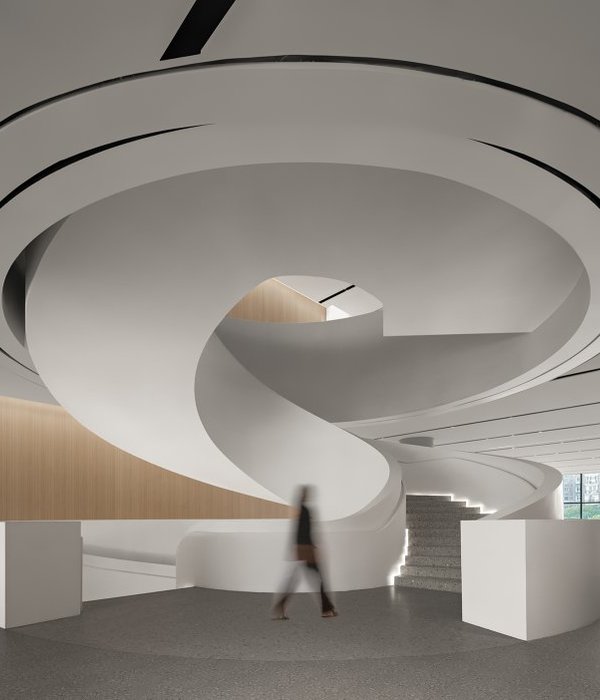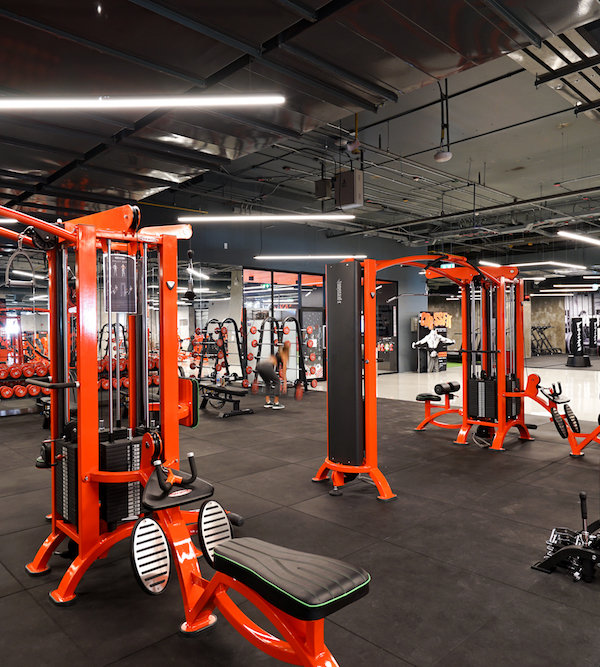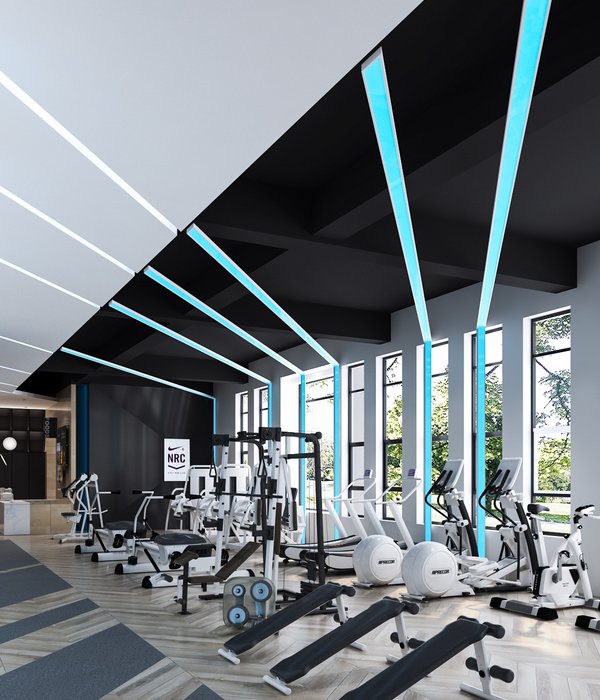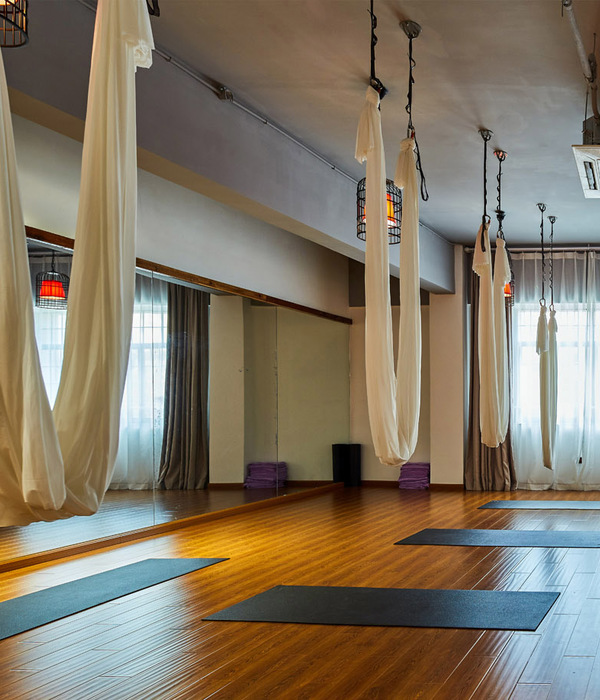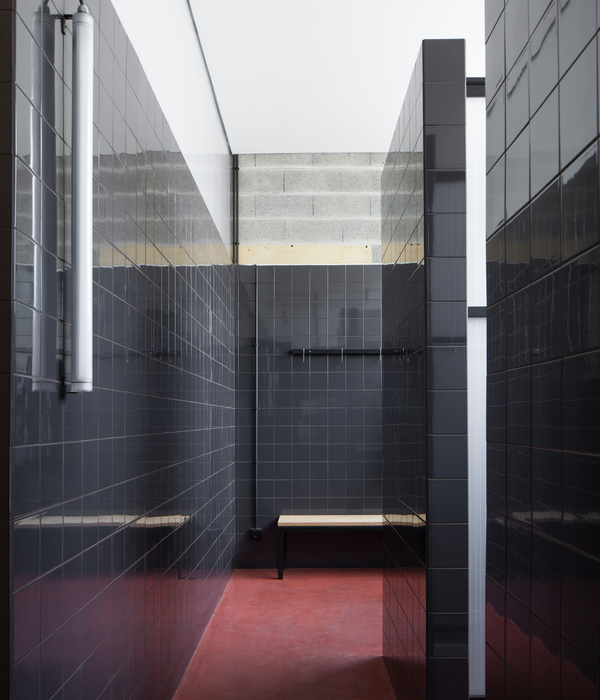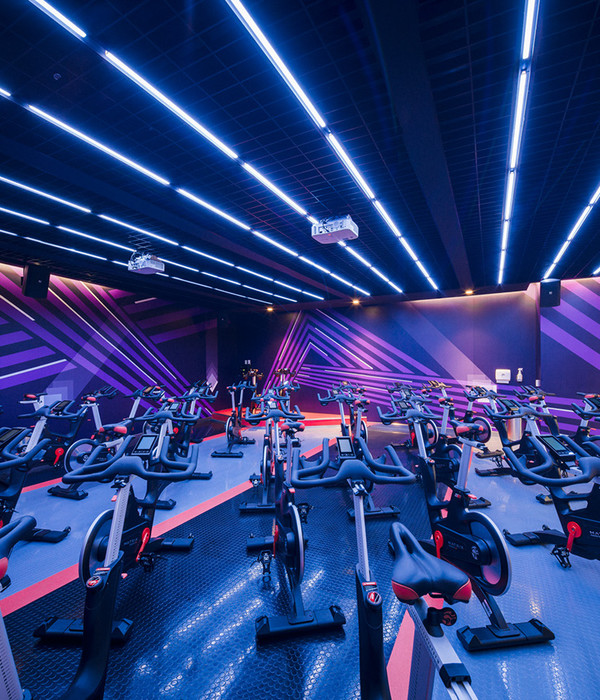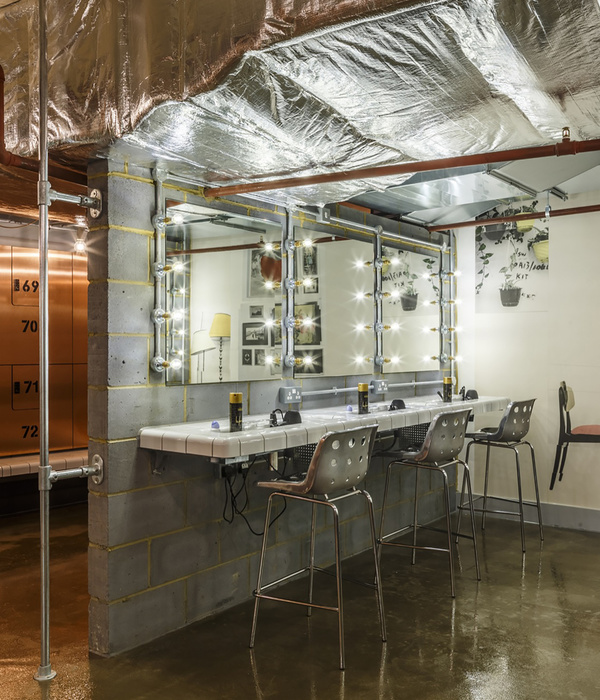As part of the annual Bex & Arts sculpture triennial, the pavilion by Montalba Architects is a temporary structure designed to be a place of information exchange and sharing of technology – a project at the crossroads of art, architecture and new technology – sited within the dramatic Swiss landscape. For the past 32 years, the event has transformed Szilassy Park into an outdoor gallery with uninterrupted views of the surrounding Alps. Space serves as a small bookstore, Fablab digital laboratory and visitor center.
Lightweight wooden shelves support the structure, double as exhibition space, and can easily be disassembled and reused for future events. Narrow black, vertical panels alternate with voids to form the pavilion’s façade and a custom perforation pattern filters the light and reinforces the relationship between the interior and the surrounding landscape. The foundations are minimal in order to limit the impact of the construction on the ground and local materials and construction methods drove the detailing and design resolutions.
The structure of the pavilion is mainly made up of panels called LVL, Lamibois, or Kerto®. Composed of extremely thin elements, these high-performance wood panels allow for dimensional optimization of the structure. Manufactured in two energy self-sufficient factories in Finland, the life cycle analysis of the Kerto indicates low carbon emissions. For the sake of spatial and visual unity, the same panels were used in the manufacturing of the furniture. Layered on top of the framing, the custom perforated Eternit® panels make it possible to control the light inside the pavilion. The repetition of the blades, their dark color, and the variation of the perforations give the building a unique and impactful presence. Eternit cement fibers were used in the façade and roof while the floor covering is a brand-new product, the Swisspearl® FLOOR. This innovative product from Eternit was selected for its lightness, longevity, resistance to fire, and its recyclability.
By nature, the components of the LED light system are slim and discrete, allowing the source to be embedded within the shelves of the pavilion’s vitrines and are virtually invisible. Coupled with a system of directional spotlights, the LED modules come with incorporated controls that facilitate lighting management and variation of intensity according to the time of day. For the sake of spatial and visual unity, the same Kerto wooden panels were used in the manufacturing of the furniture, which can be folded and stored into the central structural element. The pavilion is currently located in the Bex Salt mines, and it remains open to the public.
{{item.text_origin}}


